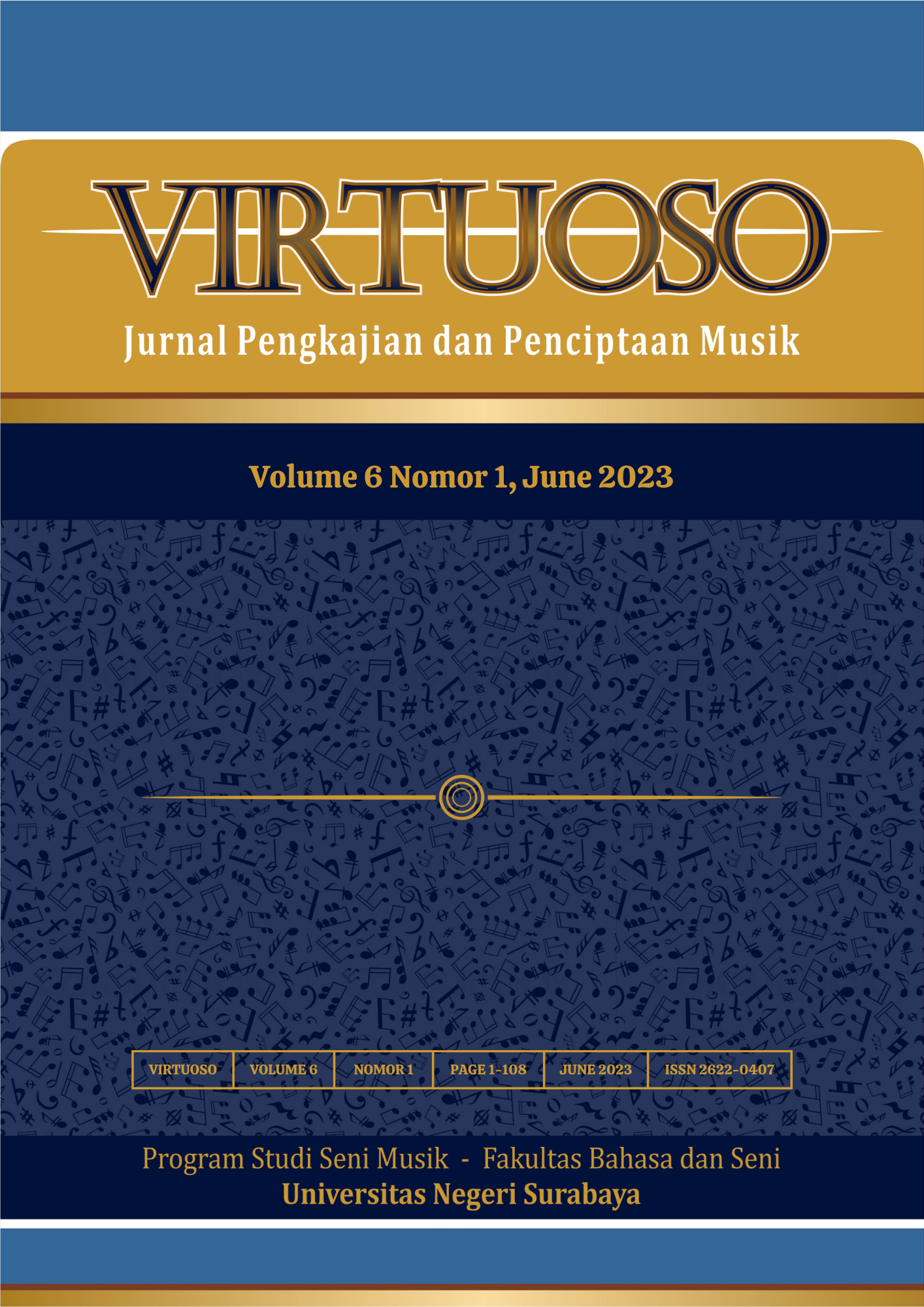Revisiting Old Curriculum as The Evaluation Basis of Current Classical Guitar Studies at Indonesian Undergraduate Studies in Music
Main Article Content
Abstract
The learning process of classical guitar at Yogyakarta Indonesian Institute of the Arts used to be a national reference. Since split into four independent programs and the last curriculum revision, classical guitar teaching across study programs requires hard work amid ambiguous and overlapping curricula. The research aims to uncover the excellence of the old curriculum as a historical foundation in evaluating current models of classical guitar learning. Using qualitative methods with a document analysis and archival approach, this seeks to overview the old curriculum. The research stages include separating primary data from secondary data. The results are then formulated based on primary data. Finally, supporting data was used to corroborate the findings. This study results in an overview of the early structure of seven guitar skill levels and their position in the learning system that prevailed to be complete in the first six semesters. The use of the level structure depended on the course package on different programs and concentrations in the Department of Music. Contributing to the findings of this research is the concept of problem-solving in the current classical guitar curriculum in the music study program as a prototype model of the ideal learning process in the future.
Downloads
Article Details

This work is licensed under a Creative Commons Attribution-NonCommercial-ShareAlike 4.0 International License.
The copyright of the received article once accepted for publication shall be assigned to the journal as the publisher of the journal. The intended copyright includes the right to publish the article in various forms (including reprints). The journal maintains the publishing rights to the published articles.
References
Buryakova, L. A., & Varavina, L. V. (2021). The organization and content of musical performance training in the higher national conservatories of music and dance in Paris and Lyon. Music Scholarship. https://doi.org/10.33779/2587-6341.2021.1.213-222
Charland, P., Deslandes Martineau, M., Gadais, T., Arvisais, O., Turgeon, N., Vinuesa, V., & Cyr, S. (2021). Curriculum response to the crisis. Prospects. https://doi.org/10.1007/s11125-020-09526-6
Gangi, J. (2018). Classical guitar study as creativity training: Potential benefits for managers and entrepreneurs. Journal of Open Innovation: Technology, Market, and Complexity, 4(4). https://doi.org/10.3390/joitmc4040045
Higgins, J., & Goodall, S. (2021). Transforming the wellbeing focus in education: A document analysis of policy in Aotearoa New Zealand. International Journal of Qualitative Studies on Health and Well-Being. https://doi.org/10.1080/17482631.2021.1879370
Indrawan, A. (2011). Music Studies Management within the Dynamic Changes odf ISI Yogyakarta. Academic Seminar: The Arts and Cultural Management. Multi Media Room, UGM Central. http://digilib.isi.ac.id/5850
Kawulich, B. B. (2005). Participant observation as a data collection method. Forum Qualitative Sozialforschung, 6(2). https://www.qualitative-research.net/index.php/fqs/issue/view/12
Lee, M. K., Hosseini Fouladi, M., & Narayana Namasivayam, S. (2016). Mathematical modelling and acoustical analysis of classical guitars and their soundboards. Advances in Acoustics and Vibration, 2016(Article No. 6084230). https://doi.org/10.1155/2016/6084230
Pitupumnak, K. (2018). Paradigm for the development of a Lanna music curriculum in Higher Education in Northern Thailand. Malaysian Journal Of Music, 7. https://doi.org/https://doi.org/10.37134/mjm.vol7.3.2018
Safari, M., Seyedin, H., & Jahangiri, K. (2019). Disaster risk governance in Iran: Document analysis. Journal of Education and Health Promotion, 8(1). https://doi.org/10.4103/jehp.jehp_30_19
Said, P. M., & Abramides, D. V. M. (2020). Effect of music education on the promotion of school performance in children. CODAS, 32(1). https://doi.org/10.1590/2317-1782/20192018144
Schiavio, A., Biasutti, M., & Antonini-Philippe, R. (2021). Creative pedagogies in the time of pandemic: a case study with conservatory students. Music Education Research, 23(2), 167. https://doi.org/10.1080/14613808.2021.1881054

